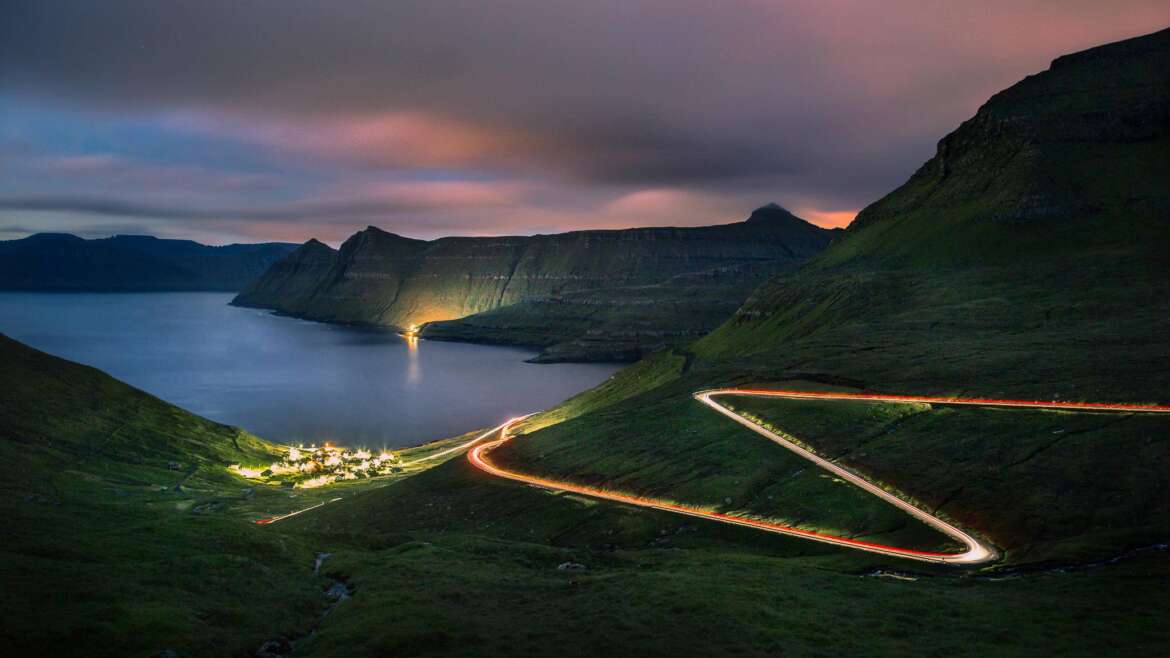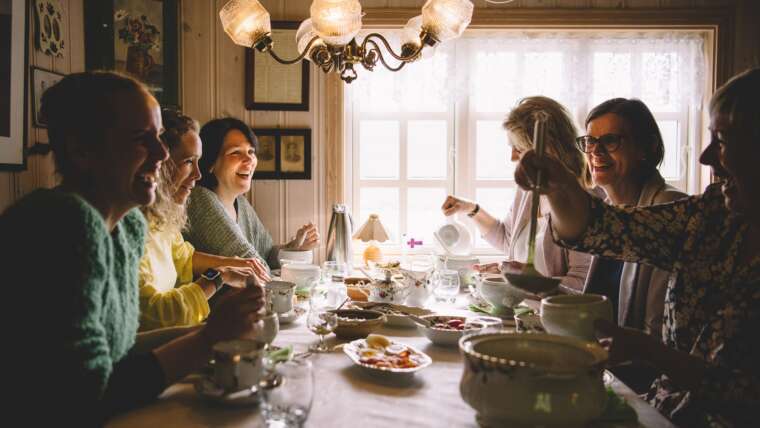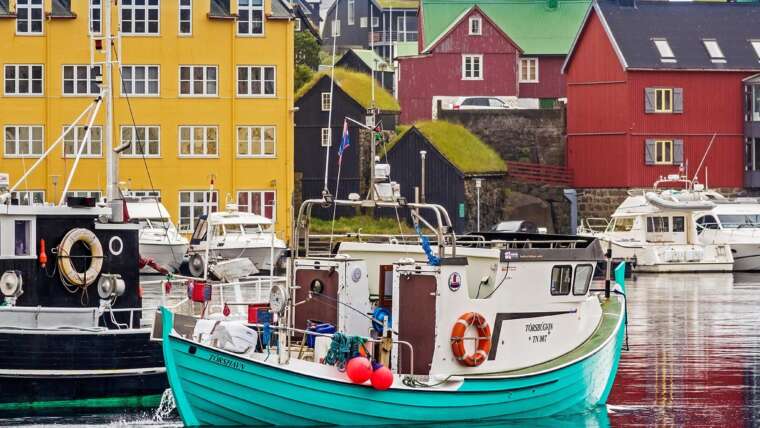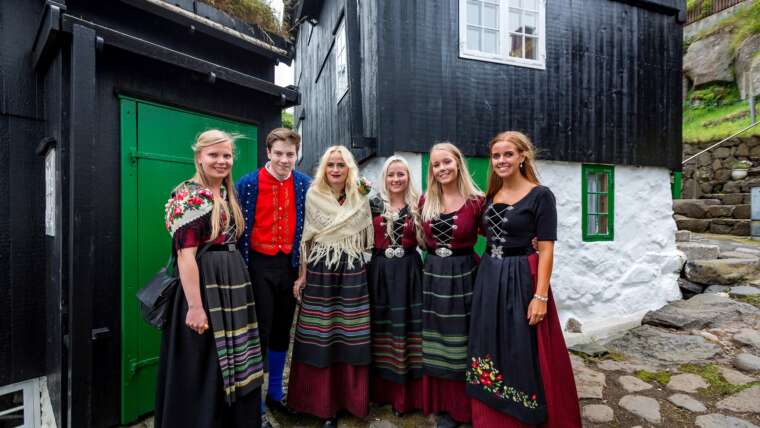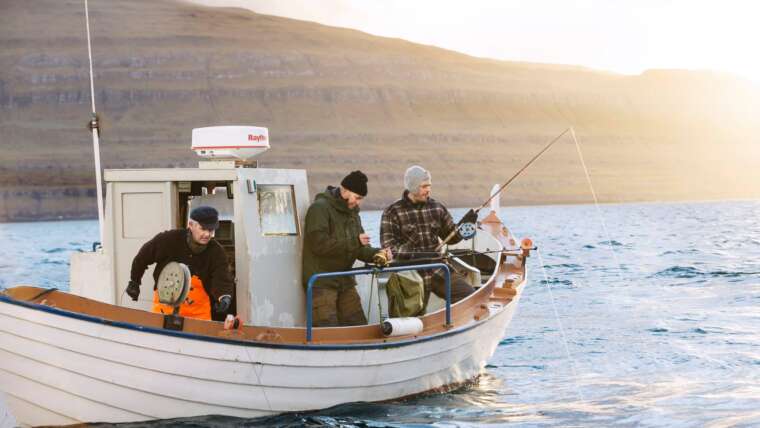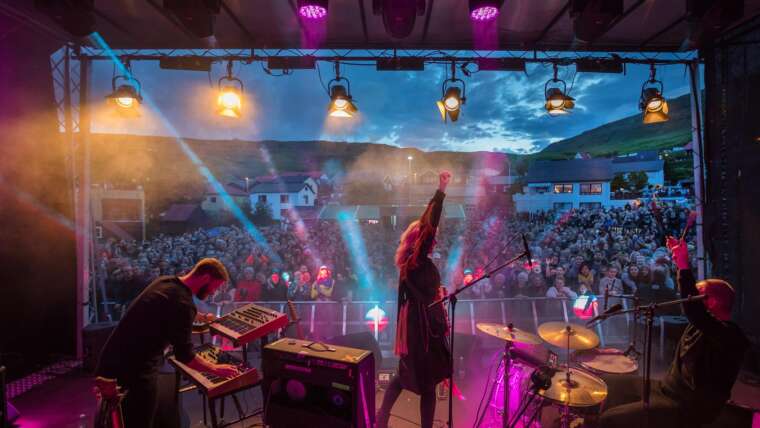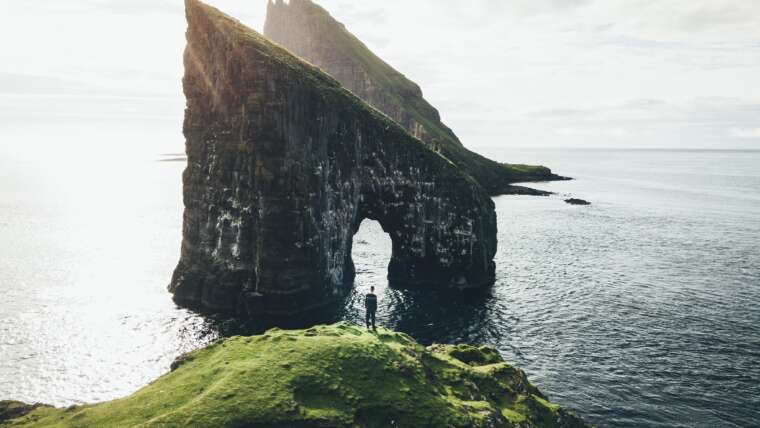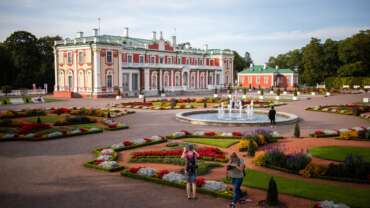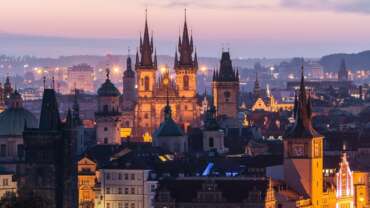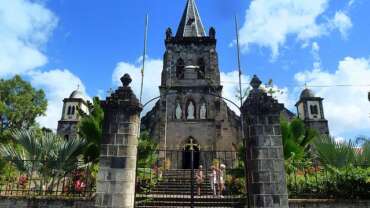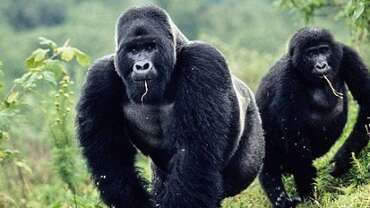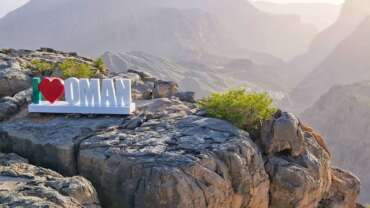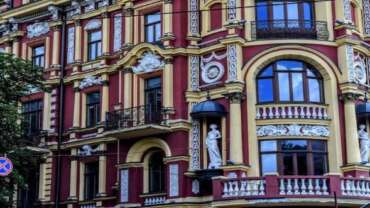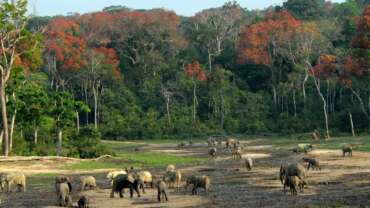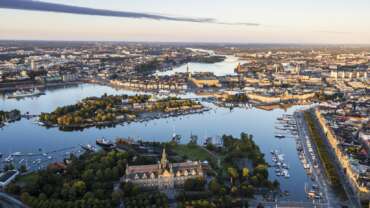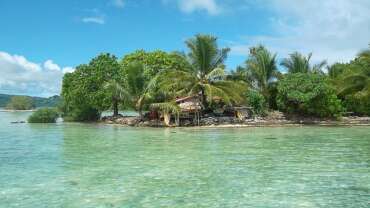The Faroe Islands – Unspoiled, Unexplored, Unbelievable
“The Faroe Islands? Yeah, they are close to Egypt, right?”
…not exactly.
If you don’t know where the Faroe Islands are, that’s OK. To be honest, it’s not all that strange, considering the total land mass of the 18 islands that make up the Faroe Islands is about 6,500 smaller than the USA, and their population 28,000 times smaller than China’s. The fact you don’t know where the Faroe Islands are located just goes to show, perhaps, that even though the planet has been well charted and documented, there are still new discoveries to be made.
Even if you do know where they’re located (thumbs up!), there is a chance you don’t know all there is to know about them.
Firstly, the Faroe Islands is an archipelago of 18 mountainous islands located halfway between Iceland and Scotland in the North Atlantic Ocean.
The islands are believed to have been first settled in year 300 AD, although archaeologists are unable to say by whom. The first known settlers, according to stories passed down through generations, were Irish monks in the sixth century. Interested in the history of the Faroe Islands? Read more here.
The name Faroe Islands first appeared as Faereyjar (in approximately 1225), which means “Sheep Islands”. This presumably led to the national symbol, which is a ram. This name was given by the Viking age settlers from Norway in the ninth century.
Since 1948, the Faroe Islands have been a self-governing nation under the external sovereignty of the Kingdom of Denmark. This means the islands have exclusive competence to legislate and govern independently within a wide range of areas, such as trade, taxation, social security and education. The Faroe Islands is not a member of the European Union, even though Denmark is.
The islands’ population of 52,000 is spread out across the 17 inhabited islands. These islands are connected by excellent infrastructure linked by together by a comprehensive road network and tunnel and ferry connections. This, along with first class telecommunications and high-speed internet, provides a superb base for maintaining the economic, social and cultural sustainability of communities all around the country.
The Faroese education system is well developed, with free primary and secondary schooling for all and a number of institutions for higher education and research. Many Faroe Islanders choose to study and work abroad during their younger years before returning home to settle.
History of The Faroe Islands
Archaeological excavations on the island of Sandoy bear proof that people lived in the Faroe Islands in year 300. However, these excavations do not reveal anything about who these people were.
The closest we come to finding out who the first settlers were is through Dicuil, an Irish scholar-exile at the court of Charles the Great in Achen, France. In 825, Dicuil writes about a man who had spoken to a priest who had been (most likely) to the Faroe Islands. The priest claimed that in 825, Irish monks, who had lived in the Faroe Islands for the past 100 years, were driven away by Northerners.
Another story, which historically is a little open to doubt, is about the Irish abbot St. Brendan, who in the sixth century goes in search of “The Promised Land of the Saints”. One particular story talks of a visit to “The Islands of the Sheep and the Paradise of Birds”, situated several days’ sailing distance from Scotland.
In the ninth century, emigrants from Norway, who were either searching for new land or wanting to escape the tyranny of Norway’s first king, Harald I, settle on the remote islands. Some decades later, settlers from Scotland and Ireland also arrive. According to writings from the Papar, an order of Irish monks, the original first settlers leave the Faroe Islands because of “ongoing Viking raids.”
FAROESE ALTHING
Around year 900, the Faroese Althing (parliamentary council or assembly) is formed, making it the oldest existing parliament in the world today. The main historical source for early Faroese history is the 13th century Icelandic work ‘Færeyinga Saga (Saga of the Faroese).
In the late tenth century, Faroe Islander Sigmundur Brestisson and his family flee to Norway after being nearly exterminated by invaders from the northern islands. Sometime after, Sigmundur is asked by Olaf Tryggvason, king of Norway, to return to the Faroe Islands to take control of the country and place them under Norwegian rule.
Another request by King Olaf Tryggvason is to introduce Christianity to the Faroese. Initially, Sigmundur seeks to convert the islanders by reading King Olaf’s decree to the Althing (parliament), but he is nearly killed by the resulting angry mob. Realizing this is not going to work, he instead raids Viking chieftain Tróndur í Gøtu’s house by night, offering him the choice between accepting Christianity and facing beheading. Tróndur chooses the former. The Faroese Althing adopts Christianity in year 999.
In 1005, Tróndur í Gøtu has his revenge. He attacks Sigmundur at night at his farm in Skúvoy. Sigmundur manages to flee by swimming to Sandvík on the southernmost island of Suðuroy. He reaches land in Sigmundargjógv in Sandvík, where a farmer kills the exhausted Sigmundur, stealing his precious golden arm ring.
The Faroe Islands become a Norwegian province in 1035, the same year as the death of Tróndur í Gøtu, the last Viking chieftain of the Faroe Islands.
KING SVERRE
In 1151, Sverre Sigurdsson is born in Norway to a Norwegian mother, Gunnhild, and a Faroese father, Unås. Aged five, Sverre moves with his family to the Faroe Islands where he is raised in the household of Unås’ brother, Roe, bishop of the Faroe Islands in Kirkjubøur. Sverre studies priesthood and is ordained as priest during his years in Kirkjubøur. In 1175, Gunnhild reveals that Sverre’s father is, in fact, Sigurd Munn, king of Norway. Sverre returns to Norway the following year and becomes king of Norway in 1184.
In 1349, the devastating pandemic The Black Death reaches the Faroe Islands, killing approximately a third of the population (at least 1000 of 3000 people).
In the late fourteenth century, Norway and Denmark join to form a double monarchy.
In 1524, King of Norway and Denmark, Christian II, goes into exile. He offers the Faroe Islands and Iceland to Henry VIII of England as collateral for a loan. Henry declines the offer. Historians believe this saved the two countries from losing their languages, similar to what happened with the Norn language in Shetland and Orkney. Christian II’s successor, Christian III, introduces Lutheranism to the Faroe Islands, replacing Catholicism.
When Norway is ceded to the King of Sweden in 1814, Norway’s western most territories, among them the Faroe Islands, remain under the sovereignty of the Danish Monarch. Not least due to the large geographical distance to Norway and Denmark, the Faroe Islands have always maintained a special jurisdiction, along with their distinct language and culture, guarded by the ancient Althing (also called Løgting since the thirteenth century).
In 1816, the Løgting is officially abolished and replaced by a Danish judiciary.
Venceslaus Ulricus Hammersheimb, a Faroese Lutheran minister, creates a spelling system for the Faroese language in 1846.
In 1849, a new constitution comes into power in Denmark. This new constitution is announced in the Faroe Islands in 1850, giving the Faroese two seats in the Rigsdag (Danish Parliament). However, as part of democratisation in Denmark with regards to the constitution, the Faroese re-establish the Løgting as a county council with an advisory role in 1852.
A trade monopoly had been enforced in the Faroe Islands since sometime in the 1500s. However, the Danish King often gave this trade monopoly to individuals, for example to Magnus Heinason in the 1500s. In 1709, the King takes back this trade monopoly with the intention of running the monopoly on his own accord. There is only one store in the Faroe Islands, located in Tórshavn. In 1830, three other stores, belonging to or under the control of the Royal Danish Trade Monopoly, open in the villages of Vestmanna, Tvøroyri and Klaksvík. The Royal Danish Trade Monopoly is abolished in 1856.
The late 1800s see increased support for the national movement, though not all people support it. Meanwhile, the Faroese economy grows with the introduction of large-scale fishing. The Faroese are allowed access to the vast Danish waters in the North Atlantic. Living standards subsequently improve and the population increases.
FIRST POLITICAL PARTIES
The first political parties, Sambandsflokkurin (The Union Party) and Sjálvstýrisflokkurin (Self-Government Party) are founded in 1906.
The first Faroese flag is created by Faroese students in Copenhagen in 1919. It is raised in the village of Fámjin in the Faroe Islands later that same year.
Up until 1938, school and churches are generally only permitted to use the Danish language. If anyone wishes to use Faroese for church services, they must ask permission. Schools generally use Danish, but in some educational instances, especially when dealing with young children, the Faroese language is allowed. In 1938, the Faroese and Danish languages are made equal in schools and churches. The Faroese language becomes the main language in 1948.
Following the invasion and occupation of Denmark in 1940, British forces launched “Operation Valentine” to occupy the Faroe Islands in an effort to pre-empt a German invasion. The occupation lasted until the end of the Second World War, with the last British troops leaving in 1945. The Faroese flag is officially recognized as the flag of the Faroe Islands by the British government in 1940. This was done so that authorities could discern what vessels were Faroese fishing boats and which were hostile boats.
During the Second World War, the Løgting and the Danish “amtmaður” (chief administrative officer) have legislative power over Faroese matters. In reality, the Faroese govern themselves during this time period. Although shipping fish to England cost many lives during these years, economically, times are good.
INDEPENDENCE REFERENDUM
In 1946, a referendum regarding independence is held. A small majority vote in favour of independence from Denmark, with a minority opting to remain under Danish rule. However, the parliamentary elections in 1946 result in a majority of parliament members who decide to remain under Danish rule. Nevertheless, in response to growing calls for autonomy, the Home Rule Act of the Faroe Islands is passed in 1948, cementing the Faroe Islands’ status as a self-governing country within the Danish Realm. The Act allows for the vast majority of domestic affairs to be controlled by the Faroese government. Some areas, such as military defence, police, justice, currency and foreign affairs remain under Danish control to this very day. The Takeover Act of 2005, which is an extension to the Self-Governing Act of 1948, grants the Faroe Islands extended self-rule.
In the early 1990s, the fishing industry collapses. When the bank, Sjóvinnubankin, declares bankruptcy in 1992, it triggers the worst economic depression in Faroese history. Unemployment rates rise to 10-15% and there is considerable emigration from the islands by the mid-1990s.
In 2007, the government of the Faroe Islands takes full control of Vága Floghavn airport (previously run by Danish authorities) and the Faroese State Church, Fólkakirkjan (also previously run by Danish authorities).
In 2013, the EU imposes sanctions on the Faroe Islands because of a dispute over herring and mackerel fishing quotas. The boycott bans Faroese vessels carrying herring or mackerel from all EU ports, including Denmark, Sweden and Finland. The boycott is lifted in 2014 after a breakthrough in negotiations.
People of The Faroe Islands
Think about the best holidays you’ve had. In many cases, the best parts of trips are the moments spent with locals, hearing their stories and seeing how they live. Those are often the moments that truly allow you to experience a culture and country.
But getting to know the locals is sometimes easier said than done. Because of their quiet and shy demeanour, the people of the Faroe Islands can at times be perceived as cold and standoffish. Rest assured that this is far from reality.
Once you get past that initial first stage of shyness and reserve, Faroe Islanders are a very warm, generous, friendly and hospitable people. Faroe Islanders are family-orientated, down to earth and have a high regard for tradition. They also tend to have a reluctance to express emotion in normal discourse – apart from when they’re talking about the weather! Faroe Islanders are well educated and love nature. They tend not to brag, and are not particularly outspoken either, but love to tell stories. If there was a suitable anonym for “superficial”, that’s what they would be. In other words, when they invite you for dinner, they actually mean it and don’t plan on brushing you off. Faroe Islanders are particularly easy-going when it comes to timekeeping, which might result from their way of approaching most matters in life: “If not today, then tomorrow.” Oh, and let’s not forget their unconditional love of a good sunny holiday!
An important characteristic about Faroe Islanders is their openness towards visiting tourists. Faroe Islanders are proud of their country and culture, and are eager to show visitors the best of what the Faroe Islands have to offer. So don’t hesitate to make contact with Faroe Islanders – you never know, it might end up as the best part of your trip.
The national language of the Faroe Islands is Faroese. Danish is the official second language and is taught in schools at an early age. English is the also taught in schools and is spoken by most people.
HISTORY OF THE FAROESE LANGUAGE
Faroese derives from Old Norse and is closely related to Icelandic, Norwegian, Danish and Swedish. Speakers of the abovementioned Nordic languages will notice familiar words and grammatical structures in the Faroese language.
Venceslaus Ulricus Hammersheimb, a Faroese Lutheran minister, created a spelling system for the Faroese language in 1846. Up until 1938, schools and churches were generally only permitted to use the Danish language. If anyone wished to use Faroese for church services, they had to ask for permission. School generally used Danish, but in some educational instances, especially when dealing with young children, the Faroese language was allowed. In 1938, the Faroese and Danish languages were made equal in schools and churches. The Faroese language became the main language of the Faroe Islands in 1948.
The Faroese Cuisine
Fermented lamb, wind-dried fish and sheep’s head. Sound delicious? Most Faroe Islanders think so.
Traditional Faroese food is of great significance to the locals; not only the part where you get to dig in and satisfy those taste buds, but also the other stages, from hunting and killing to preserving and preparing.
It is the particular uniqueness of these stages that made the Guardian proclaim the Faroe Islands the “new Nordic food frontier”, a prime example of the growing enthusiasm for the distinct and extraordinary cuisine of the Faroe Islands and evidence that Faroese gastronomy belongs on the international culinary scene.
AGE-OLD METHODS
Ever since the first settlers arrived in the Faroe Islands over a thousand years ago, the Faroese people have hunted and killed hares, sheep, whales, fish and other animals for food. Being an isolated archipelago in the North Atlantic has meant that the Faroese have largely relied on eating what is found in the environment around them. They learned to utilise every bit of every fish caught, every mammal slaughtered, and every bird netted. They also learned to store and preserve as much as possible for tougher times. These age-old creative preservation methods are still used today, and have resulted in food that has distinct and unmistakable flavours, inherently contingent on the climate in which it is stored.
RÆST
One of the distinctive flavours is what the Faroese call ræst, meaning fermentation. This is the process of drying meat and fish outdoors, allowing an aging or fermentation process to occur. Whether or not the correct taste is acquired depends on the climate; warmer temperatures will spoil it, too cool temperatures will prevent the fermentation and too much wind will render it tasteless.
Although these traditional methods might be deemed unnecessary in modern times, the unique and inimitable taste created by these processes, coupled with the philosophy of using what nature provides, is as appealing to Faroe Islanders today as ever before.
FOOD PRODUCTION
There are no indigenous land mammals in the Faroe Islands (the hare, for example, was introduced from Norway) and barely anything grows above ground. Turnips, beets, radishes, swede, potatoes, carrots and Jerusalem artichokes are the vegetables produced by farmers in the Faroes. Greenery comes from herbs such as angelica and sorrel, and wild plants such as sea purslane, cuckoo flower and reindeer lichen.
DINING IN THE FAROE ISLANDS
The Faroese restaurant culture has changed drastically within the last decade, not in the least because of a few brilliant and innovative Faroese chefs, initially led by the celebrated Leif Sørensen and more recently by the chef at 2-star Michelin-star restaurant KOKS, Poul Andrias Ziska. Not only has it become commonplace for Faroe Islanders to eat at restaurants, they have also started to accept that traditional Faroese food is suitable for fine dining. New restaurants are consistently emerging. One of the newest in line is (surprise, surprise) Ræst, which serves traditional Faroese dishes – the type you’d find on family dinner tables across the country. On the menu is fermented cod, fermented lamb intestines and fermented colon on sauerkraut, mustard and croutons. Delicious. Other new restaurants include a grill house called The Tarv, and Skeiva Pakkhús, located close to the harbour in Tórshavn.
Europe's best kept secret
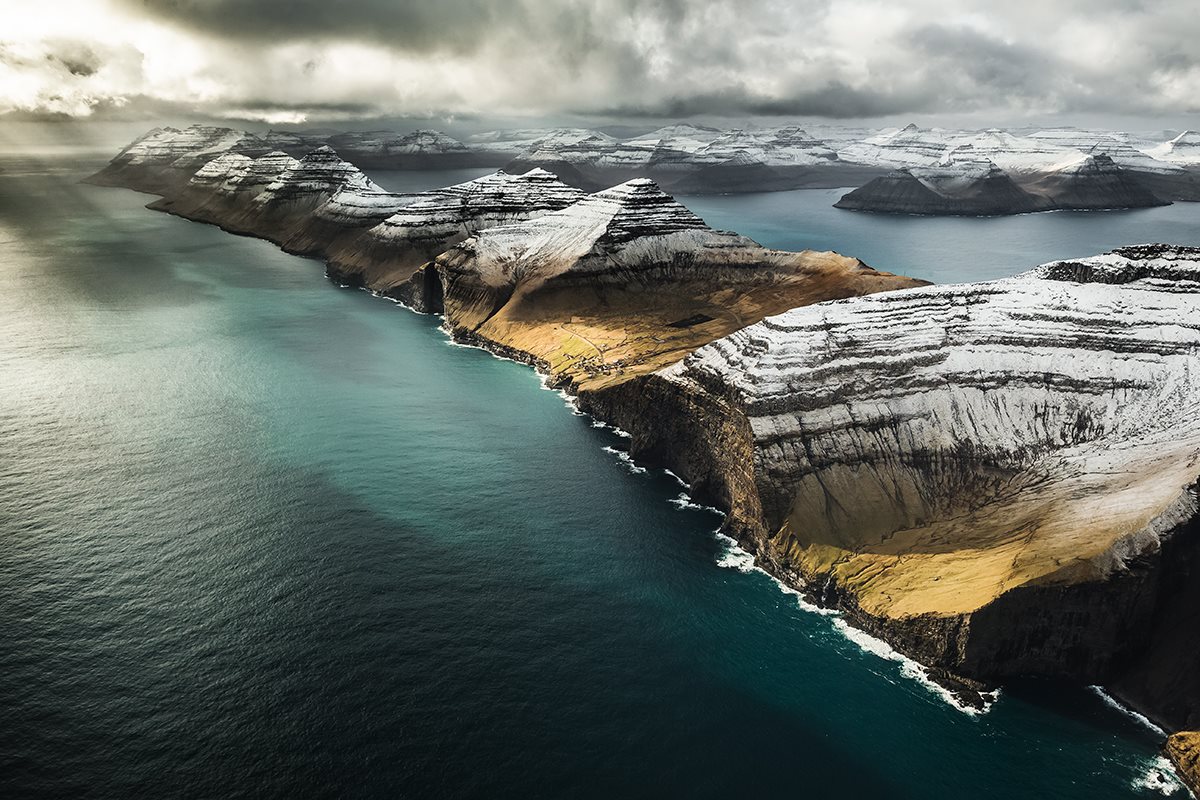
Adrift in the whirling rhythmic North Atlantic Sea, a different world lingers. A place like no other on earth. An idyllic escape, peacefully set among lush green valleys, imposing basalt cliffs, grand treeless moorlands and waterfalls plunging directly into the wind whipped ocean. Unfathomable beauty, mysteriously tucked away like a figment of a child’s imagination.
The 18 jagged volcanic islands which make up the Faroe Islands resemble a handful of rocks scattered haphazardly in the deep-sea ocean. Home to mountains of myth, hobbit-like turf-roofed houses and grazing shaggy sheep, these islands make up the perfect playground for the senses. They inexplicably unearth a soothing sound of stillness and a touch of rawness, only bettered by the taste of the freshest of air and the sight of sprawling landscapes in any direction. And the smell. That smell of unhurried childhood.
Fickle and highly changeable weather adds to the charm (or puts forth a challenge, depending on how you see it). Hold out both palms and you might feel snow falling on one palm and sun shining on the other. Nevertheless, the multitude of opportunities across the islands downplay the importance of weather. There is always something to experience, regardless.
The Faroese people are shaped and moulded by the harsh elements that have surrounded them for generations; a wonderful blend of isolation, robustness and reserve, open arms, genuineness and warmth.
Few communities as small can boast of an equally vibrant art and music scene, while Faroese gastronomy has never been more highly thought of. The decidedly slow pace of life on the islands lends itself to hospitable kinfolk and laid-back living.
But all is not slow and easy-going. The islands are also an adrenaline junkie’s dream, with no shortage of fast-paced activities on land and sea.
All of this and more creates a unique and inimitable destination at the edge of the world. A place truly unspoiled, unexplored and unbelievable.



